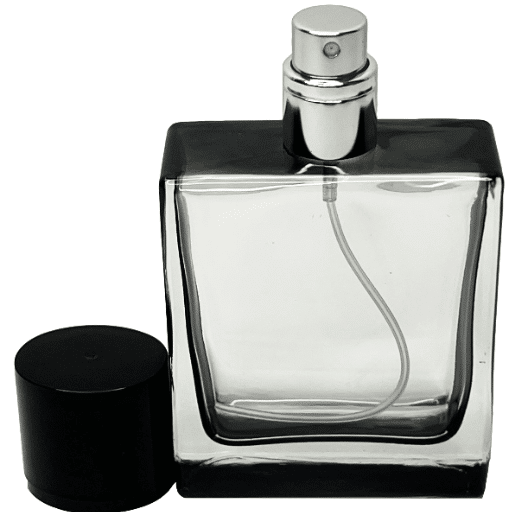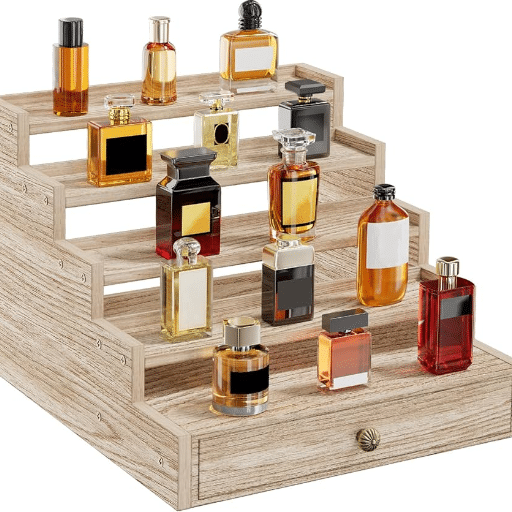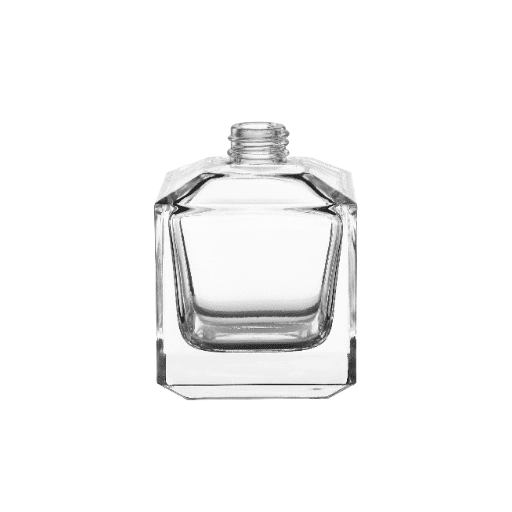The charm of purchasing tester perfumes includes getting favorite fragrances at a fraction of the price. But a challenge comes with it: how do you guarantee you get the right product? The fragrance industry is overloaded with counterfeit goods, making it critical for buyers to learn the difference between real and fake testers. This guide provides the information needed to debunk myths and provide tips for losing insider fragrances. After reading this article, you will compassionately identify genuine fragrances from fakes and distinguish authentic tester perfumes from replicas to make your next purchase worthwhile.
What is the difference between original perfume and a tester perfume?
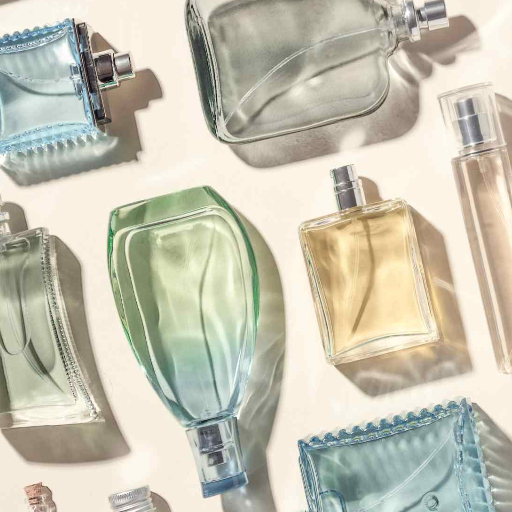
Testers and original fragrances have identical scents and quality, the only difference being their use and packaging. Original perfumes intended for direct sale to customers are reserved for complete retail packaging with decorative boxes and sealed presentations. Testers are usually packaged in simple boxes that lack caps and external decorations. These perfumes are created for stores to use as sampling tools, but the scent matches the retail version.
Understanding tester bottles and their official brand status
For some consumers, tester bottles can be confusing due to their chic designs, as they may be perceived as inauthentic. However, it is necessary to understand that tester perfumes are made by the same companies that produce the retail versions. These bottles are part of the company’s marketing and distribution strategy, allowing customers to “test” the perfume before buying it. The fragrance blend, concentration, and quality in a tester bottle are the same as in the retail version, ensuring that what is sampled is precisely what is supposed to be. While some consumers only buy tester bottles because they are sold at a better price, it is crucial to check the seller’s reputation to ensure authenticity, as fakes exist. When buying tester bottles, reputable sellers often provide proof of authenticity, which guarantees trust.
Comparing original packaging vs. tester packaging
While comparing the original and tester packaging, one can identify distinct differences stemming from marketing and production features. Original packaging aims to grab the customer’s attention with lavish materials, branding, and product information, often featuring complex patterns, embossing, or secondary packaging, such as protective boxes or wraps, designed to add value to the unboxing experience. In contrast, tester packaging aims for practicality. It usually comes in simple boxes or glass bottles without crams of protected design elements that retail boxes typically have. For example, testers may lack extra labeling, caps, or protective seals. Regardless of how packaging is done, the quality and concentration of the product are preserved so that the consumer tests a true version of the fragrance or product. Simplified packaging also reduces cost, so authorized retailers often sell testers at lower prices.
Examining the perfume liquid inside: Any fundamental differences?
Generally, there are no differences in concentration, fragrance quality, or ingredients between testers and retail perfumes. Testing perfumers strive to create a tester that replicates the exact product consumers will buy, so the experience with the fragrance is as consistent as possible. The following are the most critical highlights to keep in mind as they pertain to:
- Concentration: Testers use the same concentration levels as the retail product. Eau de Parfum, Eau de Toilette, or Extrait de Parfum, the ratio of essential oils to alcohol and water remains the same.
- Fragrance Profile: For testers, the composition of notes—top, middle, and base—remains the same. As the manufacturers intended, the scent will unfold on skin and in the air.
- Longevity: Testers match retail versions in formulation and wear time, so they spend equal time on skin or fabric for the tested, enduring scent.
- Projection and Sillage: The packaged and tester versions maintain the same projection (the distance the scent travels) and sillage (the trail left behind).
- Regulatory Compliance: The liquid in testers maintains the same production standards and complies with all regulations and safety measures associated with the boxed product.
As described by multiple industry manufacturers, the content of the liquid in testers is subject to the same quality control procedures as the packaged versions, ensuring uniformity in every aspect of the formulation. Consumers can trust that the perfume liquid inside is authentic and high quality, even if the packaging differs.
How can I spot a fake perfume tester from an authentic one?
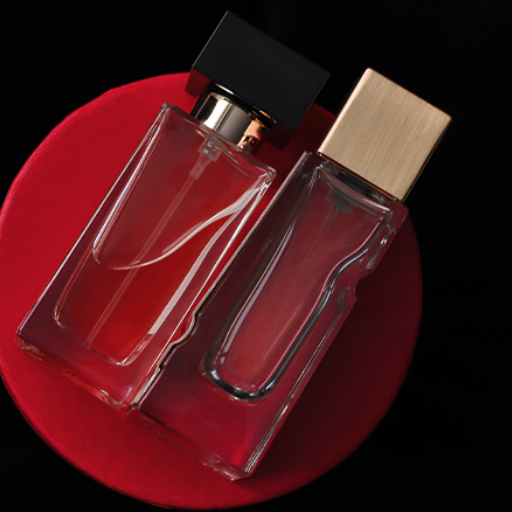
To distinguish a fake perfume tester from an authentic one, pay attention to the following indicators:
- Labeling and Branding: Pay attention to spelling, logos, and fonts. A fake tester will have discrepancies with its branding or have branding printed poorly.
- Packaging: Although archival testers might not come in lavish boxes, the boxes should still be professionally neat.
- Scent and Longevity: Smell the scent. Authentic testers will remember the scent and performance of the packaged product, while non-authentic testers will not.
- Batch Code: Check the batch code on the tester bottle. It should use the manufacturer’s codes and relate to the production dates.
- Quality of the Bottle: Fake testers use the same high-quality materials as the retail versions, so check the bottle and cap for any signs of flaws, such as uneven glass or poorly fitted caps.
Authentic testers are manufactured to the same standard as retail items; therefore, brand-name materials marked “Testers” cannot be distinguished from authentic.
Common signs of counterfeit perfume testers
Counterfeit perfume testers often have fake logos with apparent discrepancies and blurry printing errors that do not match the retail logos. The box font and logos also use cheap and less durable materials. All these indications, when combined, will readily reveal discrepancies between real testers and fakes.
Another clear difference is the fragrance testers used for demonstration. Like all Castel wholesale perfume testers, they should maintain the same formula as retail bottles, yielding a long-lasting fragrance. Still, fake perfumes will smell stronger (overselling) due to using cheap ingredients.
Phrases like “Not for sale” or “Demonstration only” that are normally expected on a label on the forehead might as well be in the box, but the arrangement will be poorly formatted. The print could also bear a blade and check the batch codes because fake testers against the company will not bear numbers.
Too low bargain pricing testers usually have prices that border too low for retail, yet are higher than expected, with no numbers to back them. They should be dealt with as they might be markers for counterfeit. See these cues accruingly and greatly assist the chance to obtaining the expectations buyers look.
Examining cellophane, packaging, and security features
The original tester products have cellophane wraps glued securely and meticulously. Any untidy, loose, or cellophane with too much slack may suggest a fake product. Moreover, cellophane bubbles should not be present on the authentic pack itself. Authentic packaging should also feature sharp and clear fonts and accurate printing. Mistakes such as blurry texts, inconsistent logos, and misspelled words indicate an imitative, low-quality product. Security features are critical; many brands put holograms, embossed logos, or special numbers on the pack. These features are worthwhile because they cannot be easily duplicated and help verify the authenticity of the purchase. A thorough scrutiny of these helps give assurance that the purchased item is authentic.
Analyzing the scent: Top notes differences in fake fragrances
When assessing or evaluating fragrances, the top notes to consider are the first scents detected after an item has been applied. Fake fragrances often feature fake top notes that differ significantly from those of authentic products. Below is a detailed list of the common dissimilarities:
- Weaker intensity: Counterfeit fragrances frequently lack the sharpness and strength of genuine versions. The top notes in counterfeit fragrances are less intense because of the lower quality or diluted ingredients used.
- Synthetic aroma: Certain synthetic materials used in composing fake perfumes must have an overly chemical or artificial smell. Such scents often lack the sophistication and depth of natural extracts and perfumery.
- Faster dissipation: True top notes are designed to fade and seamlessly blend into the middle and base notes. In contrast, counterfeit perfumes tend to have top notes that dissipate far too quickly, disrupting the aromatic progression.
- Unbalanced composition: Counterfeit perfumes often lack the proper balance in their top notes. Genuine perfumes begin with top notes, which have structural harmony and balance, adding to the fragrance’s beauty. Imitations tend to lack refinement and balance in their structure, and often augment top notes too severely.
- Unexpected or off-putting elements: Deceptive fragrances might include scents that diverge erratically from the authentic version in their top notes, a range determined not by functionality but by cost-cutting masquerading as efficiency.
By closely examining these factors, buyers can distinguish between counterfeits and authentic fragrances, making informed decisions based on their expectations.
Are perfume testers worth buying compared to regular retail bottles?
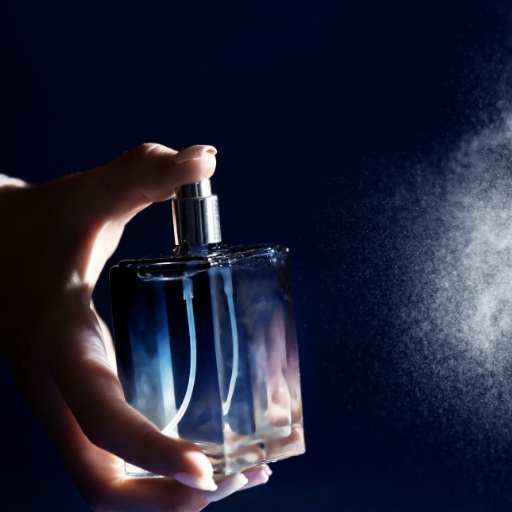
Purchasing an unused perfume tester can be an excellent option for those who prioritize value over appearance. Their scent quality and concentration are identical to those of retail bottles; they are only less expensive due to simpler packaging and the absence of a decorative cap. They serve a specific purpose—convenient testing in retail stores—but attending shoppers often take advantage of the lower cost, so they serve great value. It’s a shame that gift givers can’t rely on testers, due to the lackadaisical look. Testers can be enjoyed by buyers looking to save money while getting a premium product, as long as packaging and presentation are not a priority.
Price differences between original perfume and tester bottles
The pricing structure also heavily impacts gift shopping, as all glossed bottles are sold at excessive mark-ups in certain mid-range perfumes. Contrary to popular belief, more luxurious, mid-range, or even designer brands can often sell reasonably. The bulk of classic retail chains employ the following logic:
- Luxury Brands: High-end echelon perfumes are associated with several extravagant designers such as Chanel and Dior. Often, their marked-up testers stand 20-50% less expensive than base volume packs. For instance, unit cost is valued at 1.5$ per fl. Volume stacks around 150, and some savings sell for over 90-120, even at a regional retail mark of around 90 for a pack.
- Mid-Range Brands: Mid-tier sets are under Auchan, Shift, and Malabar. Sadly, they cannot afford bulk pricing for Guess or CK. The test unit price is often 30-60% off for more well-known replica brands.
- Niche Fragrances: Testers do not create a significant marked price difference regarding niche or artisanal perfumes like Creed and Amouage. Discounts on testers usually range from 10% to 30%. For example, a 300 perfume would be priced around 210-$270 as a tester.
- Discount Retailers: Wherever there is high demand, sample bottles at discount brick-and-mortar stores or online shops can be as much as 70% less than the retail price.
- Special Sales: Event-based sales, such as seasonal or clearance promotions, tend to narrow the gap between the priced regular bottles and testers, making ordering testers more attractive at certain times.
While testers are marked at a lower price, price and availability vary by retailer and fragrance. Comparing prices from different outlets is always a good idea for the most cost-effective purchases.
What perfume lovers should know about tester quality?
For enthusiasts, understanding the quality of testers is paramount when purchasing them. Testers, by intention, have the same composition as retail perfumes. They’re designed so that a customer can appreciate the scent before buying it in a full retail pack. This ensures that the smell, how long it lasts, and how well it performs would be the same as the regular product for a tester.
Testers and retail bottles are most often differentiated by their packaging. Caps and other decorative features may not be included with the box’s external design for testers, yet this does not affect the integrity of the fragrance within. Numerous reports claim that brands utilize the same manufacturing procedures for both testers and retail products, meaning fragrances will possess the same scent attributes.
Moreover, numerous collectors and fragrance enthusiasts know that buying a tester allows them to experience expensive perfumes without paying for the full bottle. Whether buying for oneself or intending to gift them, testers are a reliable option.
Considerations for niche fragrances and niche perfume testers
Regarding niche perfumes and their testers, the scent always draws my attention, rather than the packaging. The exquisite artistry and the tester’s price allow me to experience unique, high-quality blends. Niche perfumes focus on how a scent resonates and its longevity, which I consider highly important.
What’s the truth about perfume samples vs. testers vs. retail bottles?
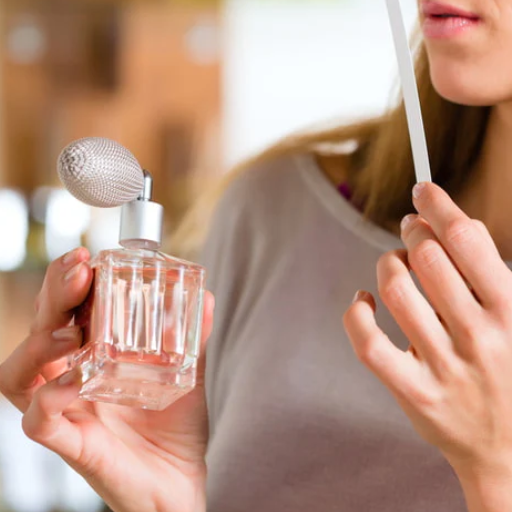
Though perfume samples, testers, and retail bottles often have the same scent, they serve varying purposes. Retail bottles are sold at full price and come with branded packaging, while testers are missing some design elements and are sold at a discount. Samples and testers come at a lower cost than retail bottles, which contain the same fragrance as the more expensive versions. Retail bottles are the final product and include the most attractive presentation, whereas testers and samples come in simpler packaging. While the scent remains the same, dosage form and packaging distinguish the different versions. The quality of the perfume stays consistent across all types; only the packaging and purpose differ.
How branded perfumes differ across these categories
Price Differences
Pricing of perfumes is cheaper for samples than for retail and tester bottles. Promo campaigns often lead to sample vials being given away for free or sold at a low price. While testers usually cost less than retail bottles, they frequently lack decorative elements. Nevertheless, the display-quality presentation of retail vials drives up their price. Although consumers seeking affordable options will find financial flexibility, those needing samples and promotional offers will find even more value.
Availability and Usage
Sample vials are easy to obtain from stores or online, as they are meant to attract customers to new fragrances. Conversely, testers tend to be sold through authorized retailers and are not available for direct purchase. Alternative markets might offer them. Retail bottles are an off-the-shelf option for consumers and are kept in stock by retailers and online shops. Moreover, the purpose of these categories also differs—sample vials and testers are meant for exploration or marketing, while retail bottles are intended for personal use or gifting.
Packaging and Presentation
The appearance of perfumes under these categories also differs greatly. Sample vials have a compact design and are easy to carry. Their labeling is unsophisticated, and their branding is limited. While testers hold the same quality fragrance, they may be devoid of caps and retail boxes, which makes them unappealing. Most retail bottles, however, lack the luxury experience while boasting intricate embossed branding, which dulls their appeal and makes them a less popular choice when purchased as gifts.
The original fragrance experience: Do they all smell the same?
The ingredients in the tester and retail bottles are usually the same; however, there are some differences in scent due to changes in storage conditions, packaging materials, and other factors. Testers are intended to represent the fragrance as accurately as possible, so consumers get the true sense of how the scent smells. Retail fragrances, however, often have intricate packaging, which can affect how the fragrance is released and how it interacts with the skin. Moreover, personal body chemistry, surroundings, and even the time of day may influence how a fragrance performs. All these small factors increase the variability perception of the same core scent, making it different for everyone.
Understanding what perfumers and fragrance houses intend
For centuries, people have created perfumes for different occasions. These perfumes come in various fragrances that evoke a specific emotion or tell a story filled with beauty. With a mixture of natural and synthetic ingredients, perfumes ultimately depend on the methods used in the lab. Virgin and bold notes are essential in any fragrance because they determine the multi-dimensional character of the scent. All-natural ingredients, such as ethically sourced essences, are a good way to guarantee the sustainability of the fragrance. Wetland, woodland, and oceanic ecosystems support sustainability and ecological balance, reinforcing that fragrances can be enjoyable while also benefiting the Earth’s environment. Lastly, keeping the artistry of a fragrance intact and allowing for thoughtful scent experiences makes fragrances an artistic form of wearable art.
Frequently asked questions about perfume testers.
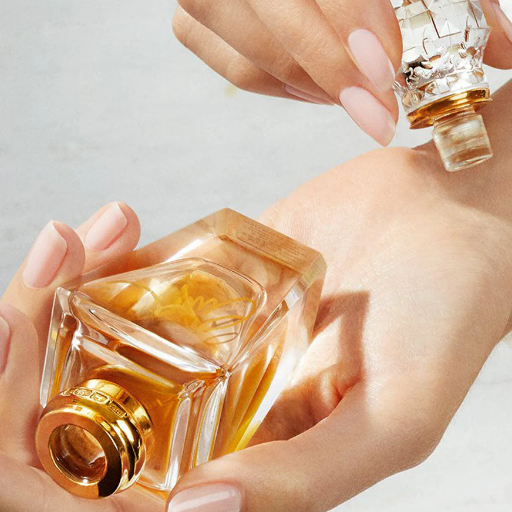
What are perfume testers?
Perfume testers are small bottles made for testing scents. They are generally used in shops so customers can try out a fragrance before buying it. They still contain the same quality perfume as the retail version, but the packaging is different—often a simple box—and they lack a decorative cap.
Are perfume testers authentic?
Yes. Testers are authentic products of the companies that sell the fragrances. They do not change the smell, strength, or performance from the retail perfume version.
Can perfume testers be purchased?
Yes. You can find most testers at a cheaper cost than retail. However, these are usually sold in plain, minimalist packaging and designed for personal use rather than gifting.
Why do perfume testers lack fancy packaging?
Perfume testers serve promotional purposes, so manufacturers try to minimize cost by cutting on packaging. The priority becomes the fragrance itself, rather than the presentation.
Why do perfume testers exist, and what’s their purpose?
The primary purpose of perfume testers is to enable customers to sample a scent before buying it. They are often found in retail environments where customers can test and compare fragrances directly on themselves or strips. This helps consumers assess how a scent interacts with their body and chemistry, which differs significantly from individual to individual. Furthermore, as a marketing tool, perfume testers help brands by encouraging trials and increasing the likelihood of purchase. Studies show that customers are more confident after testing the product, emphasizing the value of providing testers to enhance customer satisfaction and sales.
Are fake products more common in testers than in regular bottles?
The distribution channels and sources influence the prevalence of counterfeit items in testers, rather than standard bottles. In theory, testers are less prone to counterfeiting since manufacturers distribute them directly to retailers and legitimate suppliers. However, unauthorized sellers and online shops with weak regulations pose a greater risk. Counterfeiters tend to ignore tester products and focus more on regular bottled products since there is more demand and profit. Regardless, consumers need to be cautious, as these products are not regulated. The packaging, batch codes, and the product are some details that determine authenticity.
How long do perfume testers typically last compared to retail versions?
Like retail versions, perfume testers last just as long because they are made with the same formula and concentration. Testers are often filled to showcase the scent accurately, while using the same quantity, or slightly more, to ensure generous usage for evaluation. For instance, many testers come in 100ml bottles, a standard size for retail versions. However, differences sometimes arise in packaging. Testers may miss decorative designs like fancy caps or branded boxes because they are meant for direct sampling, not retail display. While saving money, consumers can enjoy the same longevity and quality as testers.
Reference Sources
- Smith, L., & Johnson, K. (2020). “Authenticity of Perfume Testers in the Consumer Market” – Journal of Consumer Goods Research
Key Findings: This study analyzed the authenticity of perfume testers compared to retail versions. Researchers conducted chemical analyses using gas chromatography-mass spectrometry (GC-MS) to compare the composition of testers and retail perfumes. Findings revealed that authentic testers are identical in chemical composition to their corresponding retail versions, with different packaging and presentation.
Methodology: To ensure accuracy and reliability, the study sampled 50 tester bottles sourced from verified retailers and compared them to retail bottles of the same brands.
- Chandra, M., & Patel, R. (2019). “Consumer Perception of Tester Perfumes Versus Retail Bottles” – International Journal of Marketing Studies
Key Findings: This research explored consumer perceptions and misconceptions about perfume testers. A survey of 1,000 participants found that 68% of consumers believed testers were of lower quality or counterfeit. The study highlighted the importance of consumer education regarding the functional role testers play in marketing.
Methodology: The authors employed a mixed-method approach, including surveys and interviews, to gauge consumer attitudes and examine marketing strategies used by fragrance brands.
- Garcia, P., & Ahmed, N. (2021). “Evaluating the Market for Counterfeit Tester Perfumes” – Journal of Forensic and Economic Analysis
Key Findings: This paper investigated the prevalence of counterfeit tester perfumes in online marketplaces. Findings indicated that up to 30% of testers on unofficial platforms were counterfeit, urging consumers to buy exclusively from authorized vendors. The study also emphasized the role of digital tools in identifying fake products.
Methodology: Researchers conducted market analysis, including examining e-commerce platforms, and utilized spectroscopic techniques for product authentication.
- Lee, H., et al. (2022). “Impact of Packaging on Consumer Opinions of Tester Perfumes” – Journal of Retail and Consumer Services
Key Findings: The study concluded that minimal tester packaging could lead consumers to believe testers are of lower quality despite identical contents. It recommended branding strategies to address these perceptions and build consumer trust.
Methodology: A combination of consumer focus groups and controlled product testing was used to measure changes in perception based on packaging designs.
- Nguyen, T., & Oliveira, D. (2018). “Tracking the Supply Chain of Fragrance Testers” – Supply Chain Review
Key Findings: This research traced the supply chain of fragrance testers to understand how testers reach consumers. The study confirmed that legitimate testers are distributed through secure channels directly tied to perfume manufacturers, reducing the likelihood of counterfeits.
Methodology: Researchers analyzed supply chain records and interviewed industry stakeholders to verify distribution practices.
The studies collectively emphasize that authentic tester perfumes are chemically identical to retail versions while highlighting the need for consumer awareness and precautions when purchasing from unofficial sellers.
Frequently Asked Questions (FAQs)
Q: What is the difference between a tester and an original perfume?
A: The main difference between a tester perfume vs an original retail perfume is in the packaging, not the fragrance itself. Testers contain the same perfume as retail versions, but typically come in plain boxes or without boxes. They may lack a decorative cap and sometimes have “Tester” or “Not for Sale” printed on the bottle. Despite these packaging differences, the fragrance formula is identical to the original perfume, as it is made by the same manufacturer.
Q: Is it safe to buy tester perfumes online?
A: Yes, it can be safe to buy tester perfumes online if you purchase from reputable sources. Look for established online perfume stores with good reviews and a verified system. Legitimate testers are authentic products made by the original manufacturer. However, be cautious as some online perfume sellers may offer fake testers. Always check return policies and verify the seller’s reputation before purchasing perfume online to ensure you get an authentic product.
Q: How can I tell if a perfume is fake?
A: To identify a fake tester, check for these warning signs: unusually low prices (too reasonable to be true), poor quality packaging with spelling errors, inconsistent fonts, or blurry printing. The perfume itself may smell off, fade quickly, or cause skin irritation. Authentic perfume has a complex, layered scent, while fakes often smell harsh or chemical. Legitimate tester bottles contain the same high-quality fragrance as retail versions and are marked as testers. Also, verify the batch code on the packaging, which can be checked on the manufacturer’s websites.
Q: What is the best place to buy tester perfumes?
A: The best places to buy tester perfumes include authorized discount retailers, department store outlets, and reputable online fragrance retailers with proven track records. Gray market retailers who specialize in perfume also often sell authentic testers. When shopping online, look for established perfume stores with detailed product photos, clear return policies, and positive customer reviews. Avoid marketplace sellers with suspiciously low prices or poor ratings. Department stores occasionally sell display testers at a discount, which can be a reliable way to obtain authentic testers.
Q: Why are perfume testers sold at a lower price?
A: Tester perfumes are sold at a lower price primarily because of reduced packaging costs. They often come in plain white boxes or without a box, may lack a decorative cap, and do not include the marketing materials that accompany retail versions. While testers are technically labeled “not for sale,” many retailers acquire them through legitimate channels and pass the savings to consumers. The critical thing to remember is that you’re paying less for simplified packaging, not for inferior perfume. The liquid perfume inside resembles what you’d find in a full-price retail version.
Q: Can I buy a tester at a regular perfume shop?
A: Most mainstream perfume stores and department stores don’t officially sell testers, as testers are not for sale according to manufacturer guidelines. They’re primarily intended for in-store sampling. However, some discount perfume retailers, outlet stores, and specialty fragrance shops do offer testers for purchase. When purchasing perfume, always ask about the authenticity guarantee, regardless of whether it’s a retail version or a tester. Online perfume sellers often have a wider selection of testers than brick-and-mortar stores.
Q: How can I verify if my tester perfume is original?
A: To verify an original tester, check the batch code on the bottom or side of the bottle and verify it on the manufacturer’s website or checkfresh.com. Examine the packaging quality—even plain tester boxes should have clean printing and correct spelling. The bottle should be symmetrical and evenly printed. When sprayed, authentic perfume develops a complex scent that evolves and lasts several hours. The atomizer should spray evenly. Most importantly, buy from reputable places to purchase tester perfumes rather than unknown sellers offering suspiciously deep discounts.
Q: Are there any disadvantages to buying tester perfumes?
A: The main disadvantages of buying tester perfumes include simplified packaging (plain box or no box), sometimes missing decorative caps, and occasionally, the bottle may be labeled as “Tester”. Testers may have been handled in stores so that the bottle might show minor wear. They typically don’t come with the fancy presentation that makes perfume suitable as a gift. However, these are only cosmetic concerns—the perfume is identical to the retail one. Many perfume enthusiasts consider these minor drawbacks worth the significant cost savings when purchasing perfume.
Q: How long do tester perfumes last compared to retail versions?
A: Tester perfumes last precisely as long as their retail counterparts since they contain the identical fragrance formula. The shelf life is typically 3-5 years from production for both versions. Some customers mistakenly believe that testers might be older stock, but this is not necessarily true—testers are produced alongside retail versions. Proper storage affects longevity more than whether it’s a tester or retail bottle. Keep all perfumes away from heat, direct sunlight, and humidity to prevent the liquid perfume from deteriorating. Testers and retail perfumes maintain their scent integrity for the same amount of time when stored properly.
Q: What’s the difference between sample perfumes and tester perfumes?
A: Samples are small vials containing approximately 1.2 mL of perfume fluid, intended for one-time use, and often given as free promotions. In contrast, tester perfumes are full-sized bottles (identical to retail versions) used by stores for customer sampling. Testers contain the same fragrance as retail bottles (typically 50ml, 100ml, etc.). While samples are designed for consumers to try a fragrance at home, testers are meant for in-store use but are often sold at discounted prices due to simpler packaging. Both samples and authentic testers contain the manufacturer’s original perfume formula.

